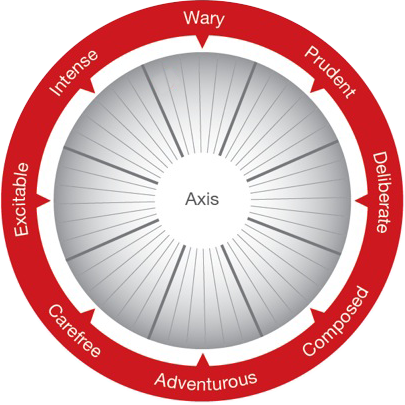Slowly but surely, the world of non-essential services is starting to contemplate and process the transition from working at home to being back in the workplace. Under the guidance and recommendations of public health groups, many people are starting to make the mental shift back to the idea of working in a group setting and being around other people, who for the past few months have been outside of their bubble and visible only through a screen.
Talking to our clients about this ‘Return To The Workplace’ (RTTW) has been fascinating for a variety of reasons. For some, the new normal that has emerged over the past few months has raised questions like ‘What IS a workplace?’, ‘Does it make sense to have people physically present in a location when there are risks like the virus present?’ ‘Do people really get more done at home than they do at the office, or vice-versa?’ ‘What does engagement really mean now that the physical boundaries of work have changed?’ and so on.
Perhaps the most fascinating, and confusing discussion around the RTTW has been about how individuals themselves differ so drastically in their views of the process. While some are very keen to get back into the workplace, and away from the glowing Zoom portal in their basement, others feel a polar opposite. While some are eager to rekindle the water-cooler hangouts, others are fearful about being around a multitude of others, irrespective of the physical distancing measures and increased attention to sanitization.
Fortunately, we know a great deal about how and why people feel so differently about situations like these, and a lot of it comes down to what we call their risk disposition. A person’s risk disposition, which we can explore through the lens of The Risk Type Compass (RTC).

The RTC provides insight into how, and why, people process risks in the way that they do. Originally conceived as a way of exploring risk disposition in financial investing, the Risk Type Compass has become a tool for understanding how people approach a range of topics like decision-making and organizational change initiatives. Today though, it also makes for an effective mechanism by which we can explore people’s attitudes around a return to the workplace.
The Risk Type Compass (RTC) is based on dimensions of a construct called The Big Five Personality Traits, which is considered to be one of the more reliable measures of a person’s underlying psychology. The RTC provides us with eight primary risk types – there is an additional Risk Type called Axial which is used to identify people that don’t have a natural tendency for any of the primary type.
Using the RTC as a lens, here are some of the more common approaches you may see people display as they consider the return to the workplace.
Wary –
Individuals with a Wary risk disposition tend to focus on controlling situations to the greatest extent possible. They will try and eliminate any uncertainty. To get the Wary individual engaged in the RTTW, provide as much information as possible, up front, about the measures being put into place to ensure safety. They will focus on adherence to rules and procedure following, having little issue with following them themselves, but will be very sensitive if others do not follow the rules as laid out. They may also struggle with any changes that are made to work processes that seem unconnected to the safety aspect of preventing spread of the virus, as they tend to not like unnecessary change.
Prudent – This type doesn’t necessarily avoid risk, but as the name suggests they like to ensure they understand as much as possible not just around any changes, but the rationales and reasons behind those changes. Their tendency to follow rules and processes can draw their focus away from bigger picture issues, and they may be critical of others who are seen to be not following rules to the letter. As the name suggests, Prudent risk types like to play it safe and may be the last group of people that embrace the return to the workplace.
Deliberate – Calm and systematic, the Deliberate risk type is rational and unemotional in their approach. Their need to understand any changes in routine at a detailed level can create obstacles to moving quickly. While not necessarily opposed to taking risks, their detachment from the process can make them seem aloof and uncaring – often seeming to minimize or disregard the emotion of the situation. Deliberate types are measured and consistent in their approach, and so will not tend to do well with last minute changes to process or procedures, so where possible, stick to the plan you created and provided to them!
Composed – People with a Composed risk disposition have a very high level of risk tolerance. They may seem oblivious to risk, and unruffled by almost anything. Confident in their opinions and perspective, they often have a high level of comfort in challenging situations. Thay tend to hold strong opinions about what they know, which can sometimes lead them to minimize other people’s concerns. They may also dismiss new, key information as irrelevant to the current situation, particularly if that information contradicts their current understanding and view of the world. Keep this in mind as you introduce new information, and also be sure to only use credible sources for planning.
Adventurous – Typically positive and open to new ideas, Adventurous types are highly adaptable and likely to have few issues with the RTTW. Adventurous types often have strongly held beliefs that the way they see the world is accurate, and that they are particularly good at estimating risk and reward, which may mean that they evaluate measures put in place by the organization as either effective or unnecessary. Where they feel the measure to be unnecessary, they may have a mild or strong disregard for rules and process, feeling that they don’t really apply to them. With this in mind, reinforcement may be necessary.
Carefree – Rather than being concerned about the return to the workplace, the Carefree risk type individual may find the change in routine exciting (for a period of time, at least). They may be excited about re-connecting with colleagues in the physical space. They also may minimize or dismiss the risks involved in returning to work and may openly or covertly think that the precautionary measures in place are either unnecessary, ineffective, or overdone. They tire quickly of bureaucracy and may ignore anything they don’t personally see as valid. Their willingness to not follow rules or processes can be a source of frustration to some of the other less risk tolerant types, and the Carefree’s dismissal of concerns can be a source of friction.
Excitable – Individuals with an Excitable risk disposition look for opportunities to improve on existing situations and processes, and so the RTTW may present an opportunity (in their mind) of how things could be done differently. However, they can also be tempted to bend or break rules that don’t suit them. So, for example, physical distance requirements may be generally adhered to, but if they become problematic for the Excitable type, they may ignore them. To get the best from an Excitable type, consider discussing and where possible supporting innovation, but play close attention that the innovation doesn’t result in not conforming to the rules.
Intense – Committed and loyal, Intense risk types will seek to follow organizational processes and procedures closely. They are likely to be vocal about concerns but will accept rationales and rules as they are laid out. However, their strong desire to avoid errors and mistakes may make them particularly cautious of anything that they deem to be risky. Getting Intense types back to a well-prepared workplace may not be challenging, but if the organization is perceived to fall short of commitments it has made to make things safe, you will see vocal and speedy pushback.
Of course, the question becomes, how can this information be used to help people with their return to the workplace. Without having everyone complete the Risk Type Compass assessment and determine their risk type, it’s a hard one to answer concretely. Perhaps the simplest measure is to ensure that whichever groups or individuals are involved in designing the RTTW process, there is a broad range of personalities and perspectives represented. As an example, for every Adventurous or Carefree risk type, it is useful to have a Wary or Prudent type to provide balance to the discussion. Keep in mind this is most useful not in terms of subject matter expertise on how to return, but more about how employees are likely to react to the process. We advise clients to consider all of the risk types as they communicate with, and work with staff as they return to work.
One final point – it’s very important to remember that all of the risk types are equally valid. There is a tendency to ascribe one’s own risk type as best, and look down on other types as being inferior, but the truth is that no one risk type is ‘better’ than any other. For a group to function effectively, it’s useful in most cases to have a mix of Risk Types. Also consider that there is a strength factor to risk type that must be considered. For example, someone can be ‘mild Prudent’ or ‘strong Prudent’. The stronger the orientation, the more pronounced their Prudent behaviors will be.

